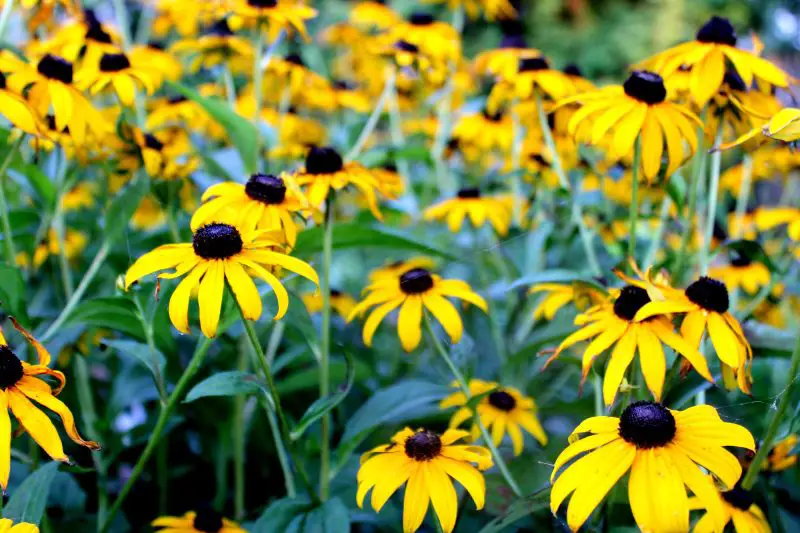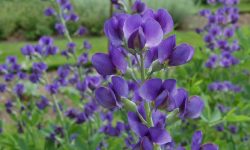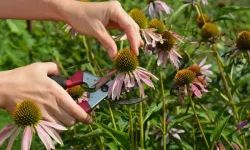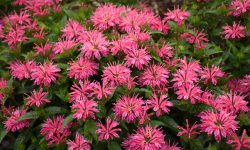Black Eyed Susans, scientifically known as Rudbeckia hirta, are one of the most popular and beloved wildflowers found in gardens across North America and beyond. Their bright yellow petals surrounding a dark brown or black center give them a distinct and cheerful appearance.
These flowers are often associated with late summer and early fall landscapes, adding vibrant color during these seasons. For gardeners and flower enthusiasts alike, understanding when Black Eyed Susans bloom is key to planning a vibrant and colorful garden that truly shines during the warm months.
This article dives deep into the blooming cycle of Black Eyed Susans, factors influencing their flowering times, and practical tips to ensure your garden enjoys their radiant beauty for as long as possible.
Understanding the Blooming Cycle of Black Eyed Susans

To predict when Black Eyed Susans bloom in your garden, it’s essential to understand their life cycle. Black Eyed Susans are typically biennial or short-lived perennials, although they are often grown as annuals depending on the climate. Their growth and blooming period largely depend on when they are planted, the climate zone, and environmental conditions.
In general, Black Eyed Susans begin blooming in mid to late summer, often starting in July and continuing through September or even early October in favorable conditions. The length of their bloom period can last between six to eight weeks, making them a reliable source of bright color in many gardens.
Their flowers flourish best during the warmest months, thriving under full sun exposure. Because they are native to prairies and open fields, they adapt well to a variety of soils but do best in well-drained, moderately fertile ground.
Climate and Geographic Location Impact on Blooming Time
One of the most significant factors influencing when Black Eyed Susans bloom is climate. Different USDA hardiness zones can affect both the timing and length of the blooming season. For example, gardeners in warmer zones such as 7 to 9 might see blooms as early as late June, while those in cooler zones 3 to 5 could experience flowering later in July or even August.
Additionally, temperature fluctuations and the length of the growing season impact the growth rate and flowering time. An early spring with mild temperatures may encourage earlier blooms, while a colder, wetter spring could delay the flowering process.
Sunlight exposure also plays a crucial role. Black Eyed Susans require full sun — at least six hours of direct sunlight daily — to produce vibrant blooms. Gardens with partial shade may see fewer flowers or delayed blooming.
Soil Conditions and Their Role in Flowering
While Black Eyed Susans are quite adaptable, the quality and type of soil can influence their health and blooming schedule. These flowers prefer well-drained soil with moderate fertility. Soils that retain too much moisture or are compacted can stunt growth or cause root rot, which negatively affects flowering.
If your garden soil is heavy clay or tends to stay wet for extended periods, amending it with organic matter like compost can improve drainage and soil structure. In contrast, sandy soils drain quickly but may require additional nutrients or more frequent watering to support healthy growth.
A balanced soil pH, slightly acidic to neutral (around 6.0 to 7.0), is optimal for Black Eyed Susans. Testing your garden’s soil and adjusting with amendments if necessary can help ensure your plants bloom on time and thrive throughout their growing season.
The Influence of Planting Time on Blooming
The timing of when you plant Black Eyed Susans can significantly affect when they bloom in your garden. If you start from seed, planting in early spring after the last frost will allow plants to establish and grow steadily toward their summer bloom.
Seeds sown directly in the garden usually take about 7 to 21 days to germinate under optimal conditions, with flowers appearing roughly 10 to 12 weeks later. This means if you plant seeds in April or early May, you can expect blooms starting in mid to late July.
For those who prefer transplanting seedlings, starting them indoors 6 to 8 weeks before the last expected frost date allows you to get a jumpstart on the season. Transplants planted in the garden as soon as soil conditions permit will also begin blooming by midsummer.
In contrast, planting too late in the season may result in delayed or sparse blooming as plants have less time to mature before the cooler weather arrives.
Caring for Black Eyed Susans to Promote Healthy Blooming
Ensuring Black Eyed Susans bloom abundantly and on schedule depends on proper care throughout their growing season. Several key factors in maintenance can help your garden’s Black Eyed Susans thrive.
Sunlight and Watering
As sun-loving plants, Black Eyed Susans need ample sunlight to produce their signature bright yellow flowers. Plant them in a spot where they receive full sun for the majority of the day.
Watering should be consistent but not excessive. These plants tolerate some drought once established, but regular watering during dry spells will promote more vigorous blooms. Overwatering, however, can lead to root problems and less flower production.
Fertilization and Soil Management
While Black Eyed Susans don’t require heavy feeding, applying a balanced, slow-release fertilizer in early spring can support healthy foliage and flower growth. Avoid excessive nitrogen, as this encourages leaf growth at the expense of blooms.
Regularly adding organic matter to the soil, such as compost or aged manure, can improve soil fertility and moisture retention, fostering an ideal environment for flowering.
Deadheading and Pruning
Deadheading — the removal of spent flowers — can encourage Black Eyed Susans to produce more blooms and extend their flowering period. By cutting off fading blooms before seed formation, the plant redirects energy into creating new flowers.
Pruning back the plants mid-season can also help maintain a tidy appearance and stimulate additional flowering later in the season.
Potential Challenges Affecting Bloom Time and How to Overcome Them
Although Black Eyed Susans are generally hardy and low maintenance, certain challenges can delay or reduce flowering.
Pest and Disease Issues
Common pests such as aphids, spider mites, and caterpillars may feed on the leaves or buds, potentially weakening the plants. Early detection and natural pest control methods, like insecticidal soap or encouraging beneficial insects, can protect your flowers.
Diseases like powdery mildew or leaf spot can affect plant health, particularly in humid or overcrowded conditions. Proper spacing for air circulation, watering at the base of the plant, and removing infected foliage can help prevent disease outbreaks.
Weather Extremes
Severe weather, including unexpected frosts, heavy rains, or heatwaves, can stress Black Eyed Susans and affect their blooming cycle. Mulching helps regulate soil temperature and moisture, while providing some shade during extreme heat can reduce stress.
In areas prone to late spring frosts, protecting young seedlings with cloches or row covers can prevent damage and ensure a timely bloom.
Extending the Blooming Season of Black Eyed Susans
For gardeners wanting to enjoy Black Eyed Susans longer, there are strategies to extend their vibrant presence in the garden.
Starting seeds indoors early or using transplants can bring flowers sooner. Planting different varieties with staggered bloom times can also provide color over a broader period.
Regular deadheading is crucial, as it encourages continuous flowering rather than seed production. Additionally, maintaining healthy soil and proper watering helps plants sustain energy for longer bloom durations.
FAQs About When Do Black Eyed Susans Bloom
When do Black Eyed Susans typically start blooming?
Black Eyed Susans usually begin blooming in mid to late summer, around July, and can continue flowering into early fall.
How long does the blooming season last?
Their blooming period typically lasts 6 to 8 weeks, depending on climate and care.
What factors affect the blooming time of Black Eyed Susans?
Blooming time is influenced by climate, soil quality, sunlight exposure, and planting time.
Can I extend the blooming season of Black Eyed Susans?
Yes, through practices like deadheading spent flowers, proper watering, and planting at the right time, you can prolong their blooming.
Do Black Eyed Susans bloom the first year from seed?
If planted early enough in spring, Black Eyed Susans can bloom in their first year, usually by mid-summer.
Conclusion: When Will Your Black Eyed Susans Bloom?
In summary, Black Eyed Susans typically bloom from mid-summer through early fall, with exact timing influenced by climate, soil conditions, planting time, and care practices. By understanding these factors and providing the right environment, you can enjoy their cheerful yellow blossoms lighting up your garden for weeks on end.
Whether you are planting seeds, nurturing young transplants, or maintaining established plants, paying attention to sunlight, soil health, watering, and deadheading will maximize your Black Eyed Susans’ flowering potential.
Embrace the beauty of this iconic wildflower, and watch as your garden transforms into a radiant sea of golden blooms during the warm months. When do Black Eyed Susans bloom in your garden? With thoughtful care, the answer is — just when you want them to.






